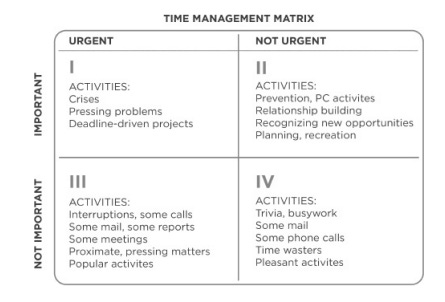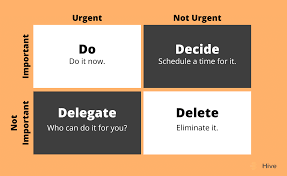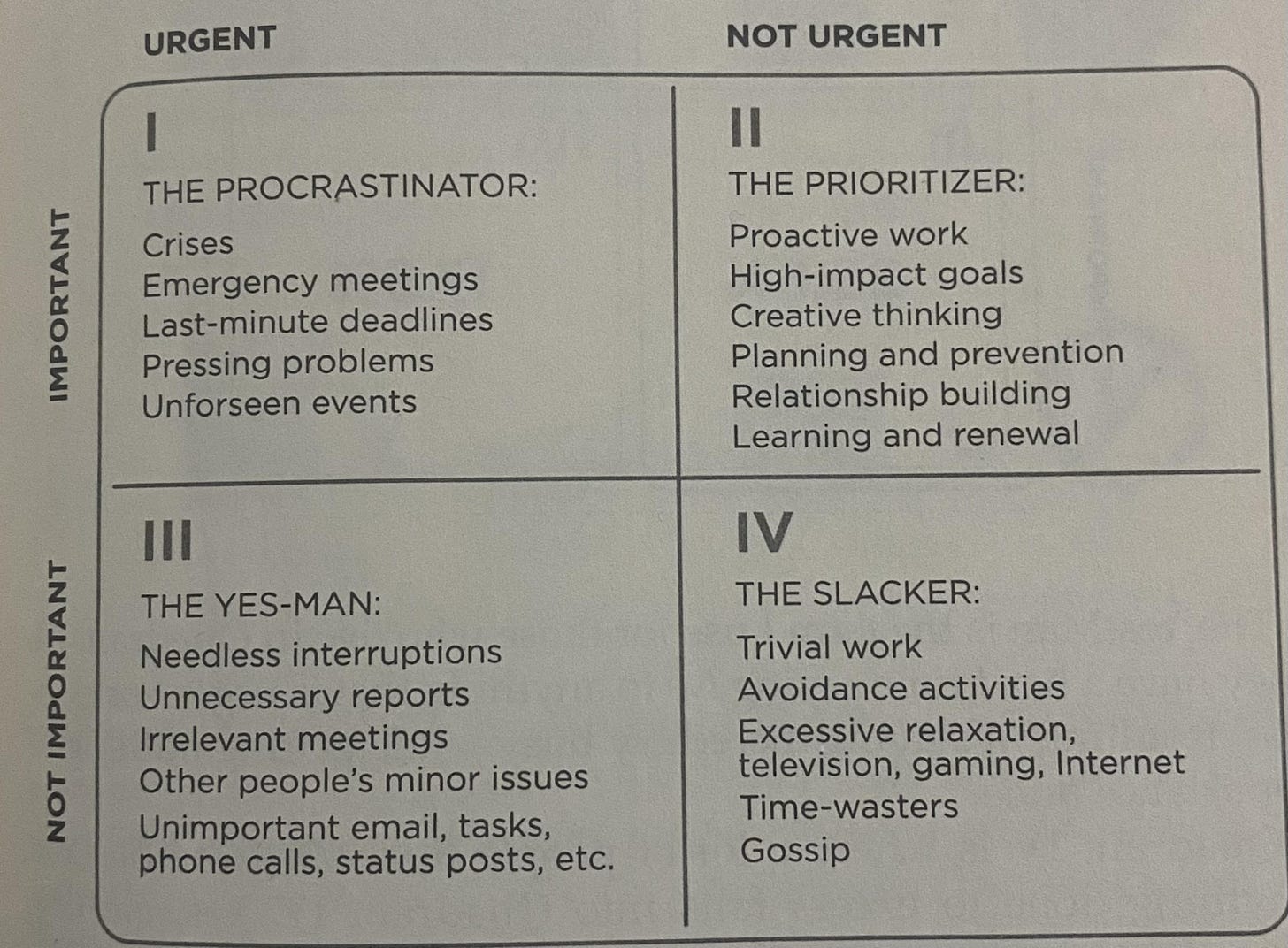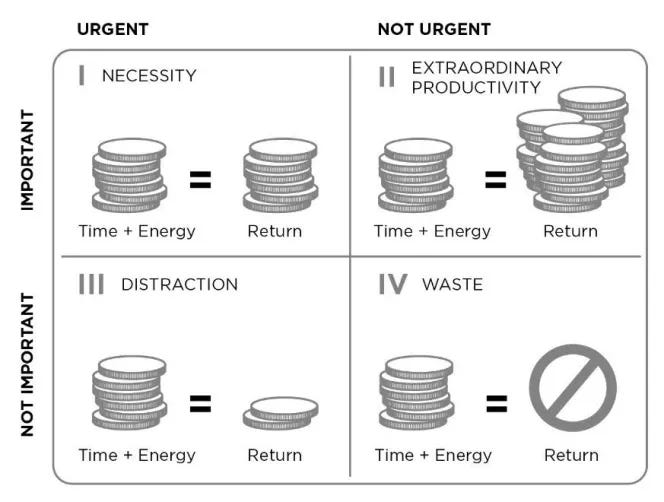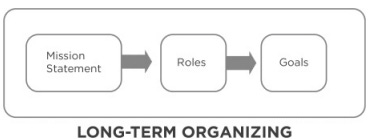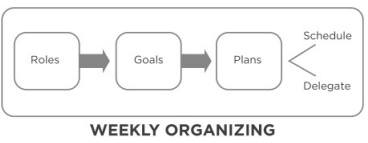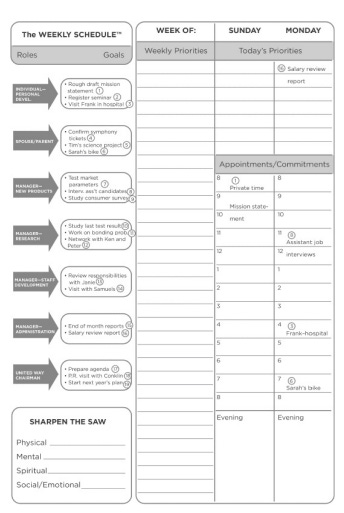Here’s a deal, if you read the entire post, I’ll do a magic trick (motivation!) I’ll correctly guess which quadrant your answer to the following question falls. You’re probably confused, but that's okay…let it unfold as you read on…
Now, take a moment and write down a short answer to this question:
What is one thing you could do (something you aren’t doing now) that, if you did regularly, would make a tremendous positive difference in your personal life?
Your answer will be important as you read this post and figure out the magic trick. When I first read the question, I thought about it a lot. It was hard for me to find things that I wasn’t already doing that would be so impactful. Here is what I thought: “Stretching, meditation, and seeing friends more often.” Yes, I had three things come up at the time instead of one, but I figured out my most important one later on.
Question 2: Now answer the same question but for your professional/school life.
My response: “For summer job: take a more leading role within the classroom and be more social/friendly with colleagues, staff, and employer.” I hope that my responses serve as an example and a motivation for you to answer these questions. Congrats to you if you did!
Did you notice something about these questions? Did you notice that it only asked for one, just one thing? If you want to change your answer to something that’s really really important, do it now. In the meantime, I’ll sneak in the…
Welcome
Hello friends, welcome back to my newsletter. In this post, I am going to discuss the habit (#3/7) of “Putting first things first” from the 7 Habits of Highly Effective People by Stephen R. Covey. I will explain intriguing and useful ideas from the book, explaining the habit. Then, as usual, I will leave you with practical tools you can apply in your life to implement this habit and live effectively. Now, let’s understand what putting first things first means….
You read my last two posts on being proactive and writing your mission statement. You’re feeling pretty good, especially after writing a mission statement for the first time. Now, it’s time to let it work for you. If the mission statement was the blueprint, this habit will be the process of building your house centered around the mission statement. With the first habit (be proactive) of the three, you decided it’s time to take the driver's seat of your life, then with the second habit (begin with the end in mind), you decided your most important destinations and with this third habit, you will be deciding and taking the most important routes to those destinations.
What does “put first things first” mean?
The third habit, “put first things first” means to prioritize the most important things (that align with our mission statement) over urgent things that gradually take us off course. The author begins the chapter by explaining that basic time management strategies over the last three generations fail to encompass that goal. Todo lists, calendars, or daily planners can be good organization and productivity tools to “get things done”, but they don’t prioritize the events or activities based on a bigger picture view (mission statement). They can easily lead you to go through the wrong “jungle”.
Wait, wait, wait, working hard just to reach something we never wanted? Wouldn’t that be scary to realize 5, 6 years from now? That’s exactly why it’s best to start with the mission statement in mind and prioritize what’s most important.
Here’s a really interesting concept from the book that will help…
Time Management Matrix (this is essential to understand)
The Time Management matrix divides our activities into four sections. Take a good look at it. Let me clarify some terms. The two factors that determine an activity are urgent and important. Urgent = requires immediate attention/action. For example, a ringing phone, Instagram notification, email, etc. Importance (the good stuff) = the results that contribute to your mission, values, and high-priority goals. We tend to react to urgent matters. Think about the last notifications you heard, you probably picked up your phone to check it despite the activity you were performing preceding it. Important matters that are not urgent require great proactivity. For example, going to the gym every day for a greater long-term benefit, spending time with your loved ones to sustain good relationships, building a healthy sleep schedule, etc. These things are extremely important in our lives, but they don’t require immediate action while producing long-term valuable results.
Diving into each quadrant (read if you want to know more)
I’ll briefly explain what quadrants 1, 3, and 4 are like, then explain why quadrant 2 is at the heart of living a better life.
Quadrant 1: the activities under this quadrant are usually “crises” or “problems”. People who let these activities consume them will get knocked out to the ground. For example, if they try to help everyone, attend too many meetings, miss deadlines, etc. These will leave you feeling stressed, burnt out, and escaping to the unimportant activities in Quadrant 4. However, since the tasks in this quadrant are important, we need to get them done first, quickly, and efficiently. For example, for many of us, it may be finishing homework, writing papers, etc.
Quadrant 3: people who spend a lot of time in this quadrant spend a great deal of time reacting to urgent things, all while thinking they are important. In reality, the urgency of this matter comes from the priorities and expectations of others.
Quadrant 4: includes busy work, time wasters, and too many pleasant/entertainment activities.
People who spend their time almost entirely in Q3 and Q4 somewhat lead irresponsible lives, resulting in dependence on others, short-term focus, shallow relationships, etc.
The above image (sorry for the quality) is a summary of the 4 quadrants with more examples of activities.
The Most Important Section of this Post
Quadrant 2 is the most important for personal management. These activities are important, yet not urgent which is why we don’t get to do them. These include building relationships, writing a personal mission statement, exercising, etc. These activities have high-value results and just doing one of these activities can make a huge impact in our lives.
Now….it is time
With the time management matrix in mind, think about your answers to the questions at the beginning of the newsletter. If you have been following the “magic trick”, I am guessing (hopefully correctly) that your answers fall into Quadrant 2. I hope you experienced a moment of “awe” as you now see the pieces of the magic come together.
In reality, if your activities didn’t fall into the Q2, then I would suggest rethinking the question and committing to doing one activity that would have a Q2-like impact.
More on Quadrant 2
This quadrant is composed of quality. This is where we proactively make the right decisions such as scheduling your week, preparing for an exam coming up, etc. The return on time and energy you spend in this quadrant is exponential, while the return on Q1 is only equivalent to the input. The return on Q3 and Q4 activities is almost none. However, just to clarify, it does not mean that we should never involve with those activities. For example, watching a good movie that you planned for is part of a healthy lifestyle, however, it needs to be intentional, planned, and in moderation. It’s when that single movie or episode leads to two or three in a row that leads to irresponsibility and feelings of guilt.
Here’s another illustration to match this section:
Saying “no”
I understand most of you reading are either high school or college students, which means you’re most likely not dealing with too many meetings, appointments, etc. However, when things do start piling up, one way to spend more time in Quadrant 2 is by saying no. Leave the distractions and focus on the things that you know matter. For me, that means not spontaneously hanging out with my friends every day and instead intentionally planning engaging, fulfilling hangouts from time to time while focusing on my priorities.
Shift your perspective
Another key thing to do to focus on q2 activities is to shift your paradigm from urgency to importance. Most of the ideas and strategies in this newsletter may go over your head if you are unfamiliar with this paradigm. The first step is to understand and accept that doing harder, proactive things over “in-the-moment” activities will lead to a better future for yourself. It will take time to shift to that mindset if you already struggle with discipline and are used to living by reacting. Let the process of shifting gears begin now.
Maybe, you already found some practical things that you took from this newsletter so far. But, I know you’re still waiting for that well-cooked pragmatic advice on how to implement this habit of putting the first things first. Sure, bring out the plates, and let me serve….
Practical Tools to prioritize Q2 activities
How can I prioritize Quadrant 2 activities in my life?
The solution here is called Quadrant 2 Organization. There are two parts to this organization. It involves long-term planning (part 1) and weekly planning (part 2). Each part has two steps. There are 4 steps in total. Let’s break it down:
Part 1: Long-term organizing:
Broadly, part 1 involves reading your mission statement, then identifying key roles and selecting goals. Read the practical steps below to incorporate them into your life.
Identifying roles: First, you need to identify your key roles. These do not need to be roles you will live by forever. Just consider the areas you see yourself spending time in during the next seven days.
For example, my current weekly roles consist of Individual (personal development), Camp Counselor, Newsletter Writer, Athlete, Friend, Son, Brother, and Student/Learner.
Selecting goals: Now, think about one or two important results that you think you should accomplish in each role during the next 7 days. These goals should somewhat reflect quadrant 2 activities and your mission statement. If you haven't written yours yet, just choose goals that you deem highly important.
For example, here are the goals of a few of my roles this week:
Camp Counselor:
Continue to take a leading role in the classroom
Newsletter writer:
Deep work (write) for 3 hours
Draft a New post on Thursday
Athlete:
Stretch twice a week (schedule it)
Track workouts consistently
Part 2: Weekly organizing
Scheduling: Using the previous two steps, now you can schedule your week including the goals in mind and how you will achieve them. For example, if you decided to write your mission statement after reading this post, you might set a 1 or 2-hour block of time tomorrow or Sunday to work on it. Looking at the weekly calendar, you can translate each goal to a specific day, as a priority task, or as a specific appointment. Once you assign a rough time block for each important activity scattered throughout your weekly calendar, oftentimes you will find that there is still a lot of free time available. This type of weekly organizing allows you to handle unanticipated events, and enjoy the flexibility and spontaneous experiences.
Daily Adapting: This step consists of adjusting your daily plans in case unanticipated events come up. It allows you to also shift tasks to best fit your schedule, time, and energy. Ideally, take a few minutes in the morning to review your schedule to get in touch with your value-based decisions and lead the day by prioritizing the most important tasks.
As I write this part of the post, I caught new things I had not before while I read the book. These things such as the 4 detailed steps of weekly planning are things I have yet to fully implement. With the clarity from this post, I will be implementing these tools in the next few weeks (hopefully alongside you). Writing the newsletter sometimes provides me with the bonus benefits of awareness and clarity (in my life), which I am grateful for.
Here’s an illustration from the book that sums up the 4 steps to quadrant 2 organizing. A demo example of what it would look like to combine the tips:
Please read this before you exit out
At this point, you might be thinking “this was interesting”, but you aren’t sold on applying the practical tool (weekly planning). I hope this post gave you different perspectives on priority and task management. In the end, the practical tool I suggested may not be for everyone. I can only find out if it’s for me after I apply it. The important thing is that you give it a shot, give yourself a chance to realize what’s important, and try this thing out. If it doesn’t work for you, you will be proud that you tried it. There will be no loss.
As we come to the end of this post, I want to leave you with a quote from one of my favorite online influencers Vinh Giang, a magician, coach, and public speaker:
“Don’t be so attached to who you are in the present,
that you don’t give the future version of yourself a chance”
Let that sink in. Thank you so much for reading. If you made it down here, I am genuinely so thankful to have you as a reader. Your support means the world to me. Let me be the front-seat passenger as you drive into self-improvement. See you next time. Have an amazing week!



